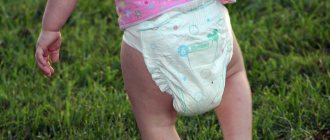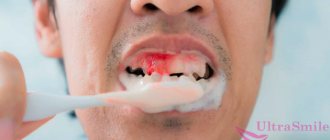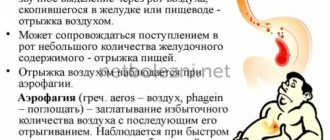Diseases of the stomach and intestines in young children are among the most severe areas of domestic pediatrics. There are two large sections of diseases of the digestive system in children: organic and functional. Organic diseases are associated with structural changes in organs, that is, there is damage to organs and tissues. Functional diseases are characterized by the absence of damage to organs and tissues, but there are disturbances in the regulation of the functioning of these organs. It is worth noting that changes in the regulation of internal organs are characterized by the appearance of symptoms that are very similar to symptoms in organic pathologies. This is the difficulty in diagnosing and treating children.
In 2016, an improved classification and new criteria for diagnosing functional disorders of the digestive tract in young children were developed - the Rome Diagnostic Criteria IV. This group includes infant colic. Next, we will consider this pathology in more detail, analyzing the main manifestations and methods of treating this disease in a child.
What is intestinal colic
Intestinal colic is a sharp, sudden (for no apparent reason) restlessness, prolonged crying or screaming in a baby, usually in the first four months of life. Infant colic begins approximately two to three weeks after birth and reaches its peak by the sixth week. After the eighth week, their intensity and frequency gradually decreases. Most often they are observed from birth until three to four months. Sometimes up to five or six months. It is worth noting that 60-70% of children have severe colic , which negatively affects the psychological state of parents.
Parents need to be prepared for a difficult period, because 60-70% of children have severe colic.
Exercises for colic for newborns on a fitball
Exercising on a fitball not only prevents colic, but also has the following positive effects:
- strengthen muscles;
- eliminate muscle hypertonicity;
- ensure proper development of internal organs, improve blood circulation;
- normalize the digestion process and metabolism;
- promote correct posture;
- increase endurance;
- develop the vestibular apparatus;
- help develop coordination;
- stimulate the body's defenses.
To prevent colic, rocking on the stomach is performed:
- It is advisable to undress the baby completely so that only the diaper remains.
- Place a diaper on the fitball if the baby is less than 2 months old, so that the rubber does not cause skin irritation.
- Carefully place the baby stomach down.
- Place one palm on your back, hold your legs with the other.
- Rock back and forth, left and right, in a circle.
Exercises cannot be done if the baby is sick, the wound on his navel has not yet healed, or he is very capricious during exercise.
During class, you can play relaxing music to create a calm atmosphere. You need to constantly talk to the child so that he feels the presence of a loved one.
Causes of intestinal colic in children
The main reasons leading to the development of colic in children include:
- Unformed nervous regulation of the baby’s intestines.
- Increased gas formation due to a lack of enzymes in the gastrointestinal tract.
- Intestinal dysbiosis, that is, a violation of the intestinal microbiota. To put it in more accessible language, this means an imbalance between the microorganisms that inhabit our intestines.
- Poor nutrition for nursing mothers.
- Gallbladder dysfunction.
- One of the most studied causes of intestinal colic is currently intolerance to cow's milk proteins.
As stated earlier, the main cause of functional diseases is a violation of the nervous or humoral regulation of the functioning of internal organs. In this case, there is a violation of the regulation of intestinal activity in a newborn and infant.
Massage for colic
Komarovsky recommends massage for colic in a newborn. This is an absolutely safe and quite effective way to alleviate the baby’s condition. Before you begin the massage, you need to remove your jewelry and warm your hands on a cup of hot water. You can lubricate your palms with baby cream for better glide. Technique step by step:
- Perform stroking from the hypochondrium area downwards. The palms should follow each other one after the other.
- Grasp the baby's heels with one hand and press them to his stomach. Use the second palm to make stroking movements, as before.
- Place your hands on either side of your navel. Make sliding movements from the center to the sides.
- Perform circular strokes around the navel.
- Using sliding movements, move your palm along the course of the large intestine (from the hypochondrium down the left side of the child’s body).
- Perform stroking along the transverse and descending colon (from left to right above the navel and down).
- Continuously move your palm from bottom to top from the left side of the navel, from left to right and down (ascending, transverse, descending sections).
- Using your fingertips, make tapping movements from left to right on the abdomen.
- Finally, bend and straighten the baby’s legs several times. Turn over onto your stomach and make stroking movements on your back.
After the massage, the child must be dressed warmly and put a diaper heated with an iron on his stomach.
Massage for colic accelerates the elimination of gases, which relieves pain and calms the fragile nervous system, which reacts sharply to any irritants.
Acupressure for colic
In addition to massage aimed at the abdominal cavity, you can perform acupuncture. This is rubbing, pressing on reflexogenic points. They are located on the foot (in the lower 2/3) and just below the patella, above the inner ankle. Acupressure will not harm the baby; it can be performed in tandem with regular massage.
Acupuncture can be done when colic occurs or for preventive purposes. If the child reacts to the actions with strong crying, you need to stop the massage.
Contraindications
Massage has contraindications:
- asymmetrical bloating;
- pronounced peristalsis in one place;
- the gas did not pass for a long time, there were no trips to the toilet “in a big way”;
- excessive lethargy and pallor of the baby;
- hyperthermia;
- blood from the anus;
- painful round growth in the navel area;
- severe pain that does not subside for a long time.
The listed symptoms indicate intestinal obstruction, volvulus or intussusception, strangulation of the umbilical hernia. Massage is also prohibited if the skin on the abdomen is damaged or there are rashes on it.
If the listed contraindications are absent, you should still consult a pediatrician before the massage to avoid adverse consequences.
Symptoms of intestinal colic in a child
Parents often ask the question: “How can you tell if your newborn has colic?” According to the Rome criteria for diagnosing functional diseases in young children, intestinal colic begins and stops in children under the age of five months. The main symptoms and signs of colic in a newborn include:
- Regular and prolonged bouts of crying, restlessness and irritability in the baby that appear for no apparent reason. Typically, these episodes last three hours or more per day and occur at least three days a week for at least one week. For convenience, this can be called the “rule of three.”
- Absence of signs indicating a developmental disorder in the baby. Also, such children should not have a fever or signs of other illnesses.
Parents need to carefully monitor their baby's behavior and watch out for warning signs.
It is worth emphasizing that there are so-called “ alarm symptoms ” that can confirm or exclude organic pathology in the baby.
Symptoms of anxiety include :
- Vomiting blood.
- Aspiration. Aspiration is the entry of liquid or food into the respiratory tract. Most often observed in organic pathology.
- Apnea or, in other words, cessation of breathing.
- Difficulty swallowing food and feeding.
- Unusual positions during feeding.
These symptoms exclude the presence of a functional pathology. In such cases, an in-depth examination is recommended to make a correct diagnosis.
Effective folk remedies
Treatment of colic using alternative medicine involves the use of medicinal plants:
- Dill. Grind 1 tsp into powder. grass seeds and pour 200 ml of boiling water. Boil over low heat for 15 minutes. Leave to infuse for half an hour. Pass through gauze and give the child to drink 10 ml 3 times. per day. Dill has antibacterial and anti-inflammatory effects, stimulates the body's defenses.
The herb contains ester, which improves lactation. Therefore, it is recommended that mothers also drink dill water.
- Fennel. Pour 10 g of fruits with a glass of boiling water. Leave for an hour in a warm place. Strain and give the baby 10 ml 3 times. a day before feeding.
- Chamomile. Pour 15 g of flowers into 0.4 liters of water. Place on the stove and wait for it to boil. Remove from heat to a warm place for an hour. Strain and give the newborn 1 tsp. 3 times a day. Chamomile has anti-inflammatory, antibacterial, and soothing properties. It also strengthens the immune system.
- Medicinal herbal tea. Mix equal amounts of mint, cumin and anise seeds, and valerian root. Pour 20 g of the mixture into a glass of boiling water and leave in a warm place for half an hour. Give the child 3 rubles. 10 ml per day before meals.
- Chamomile and immortelle. Mix plants in equal quantities. Pour 20 g of the mixture into 300 ml of boiling water. Let it brew for several hours, strain. Give the baby 2 drinks. per day 15 ml.
Despite the fact that traditional medicine recipes involve the use of only herbal ingredients, you should first consult a doctor. If this is not done, you can harm the health of the newborn baby.
Symptoms
The main and most distinctive sign of colic is the baby's cry. It is this cry that you will not confuse with a cry of hunger or discomfort, or with whims, or with anything. SO a newborn will cry only and exclusively during colic, mothers with experience understand exactly what we are talking about, and mothers without experience will soon themselves remember the notes and decibels characteristic of this crying.
The second distinguishing feature is that this scream cannot be stopped. Nothing helps. The baby screams with the same “intonation” both in the crib, and lying on his tummy, and in his mother’s arms, and in his father’s, and in his grandmother’s, and after changing the diaper. He yells, despite all your efforts to please him.
In addition, there are specific medical symptoms of this phenomenon in infants:
- the stomach hardens, as if it is bursting from the inside;
- the baby writhes, clenches and unclenches his fists;
- the baby sharply pulls his legs towards his tummy, bending them at the knees, and just as sharply straightens them;
- some children stand tall, arching their backs;
- There are gases leaving all the time and there are quite a lot of them.
Basic advice from Dr. Komarovsky
All that modern medicine knows about infant colic is that such a problem exists. Not a single doctor will tell you the reason why your child has these pains. But the famous doctor gives universal recommendations on how to survive this difficult period in the life of a newborn:
- Do not overheat the baby, do not put a lot of clothes on him, and if you swaddle him, do not do it too tightly.
- Regularly ventilate the room in which the little one is located, make sure that the temperature is comfortable (18-20°C) and the air is not dry.
- Watch your diet, but don't force yourself into strict limits.
- Maintain intervals between feedings and do not overfeed your baby.
- Do not engage in experimental searches for a solution to the problem, especially if this may harm the baby.
- There are no medications that can cure colic once and for all; any medications in this matter help the parents more than the baby.
- Delegate some of your responsibilities to the baby’s grandmothers and father, try to rest.
But the most important thing is not to irritate the child again. All he needs is a calm, content, rested mother and a calm, loving father. Give it to him. The pain will go away regardless of any external factors. The main thing is to maintain the peace of mind of parents during this difficult period.










